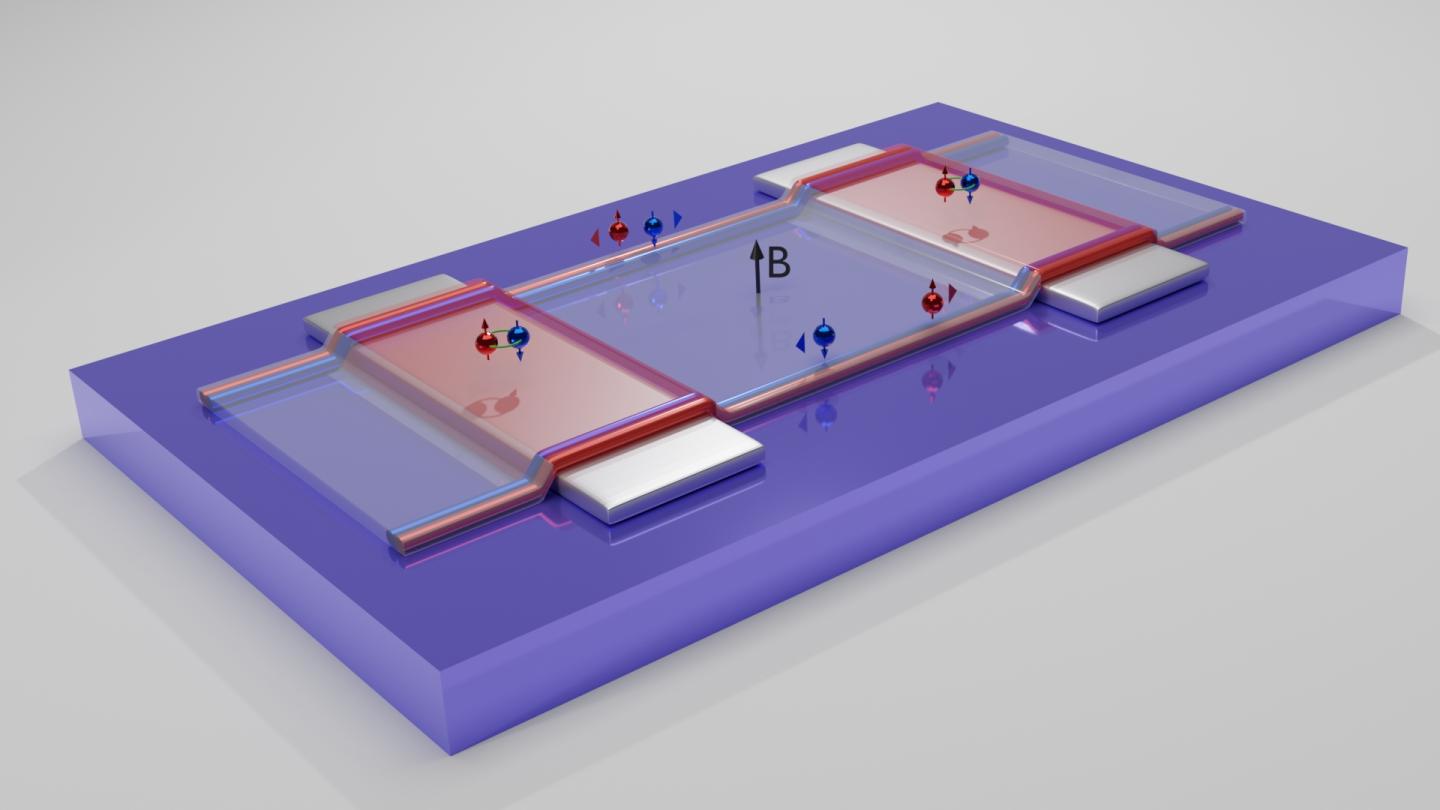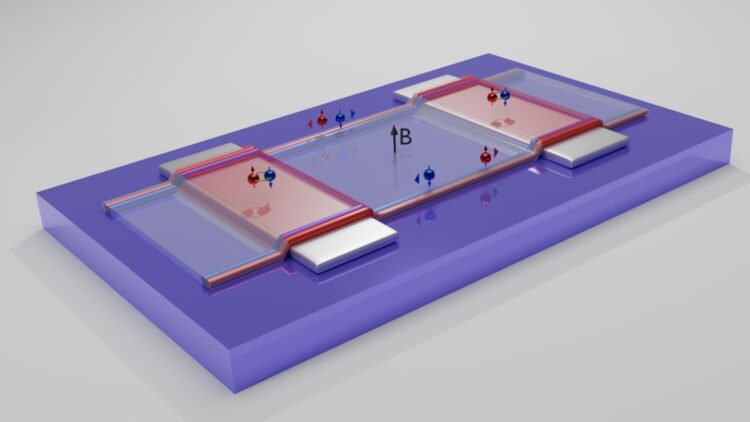
Credit: Department of Physics, University of Basel
Topological insulators represent a key area of research because they could potentially be used as superconductors in the electronics of the future. Materials of this kind behave like insulators on the inside, whereas their surfaces have metallic properties and conduct electricity. A three-dimensional crystal of a topological insulator therefore conducts electricity on its surface, while no current can flow inside. Moreover, due to quantum mechanics, the conductivity on the surface is almost lossless – the electricity is conducted over long distances without heat generation.
In addition to these materials, there is another class known as second-order topological insulators. These three-dimensional crystals have conductive, one-dimensional channels running along only certain crystal edges. Materials of this kind are particularly well suited to potential applications in quantum computing.
Theoretical prediction
Experts assume that the semimetal bismuth exhibits some of the properties of a second-order topological material. Moreover, researchers have also predicted – from theory – that atomically thin layers of another semimetal, tungsten ditelluride (WTe2), will behave like second-order topological insulators – in other words, they will conduct electricity losslessly at the edges while the rest of the layer behaves like an insulator.
The team led by Professor Christian Schönenberger of the Department of Physics and the Swiss Nanoscience Institute at the University of Basel has now analyzed tiny tungsten ditelluride crystals consisting of between one and 20 layers. To determine the material’s electrical characteristics, they attached superconducting contacts to it before applying a magnetic field. As the material was sensitive to oxidation, the researchers worked in a special low-oxygen box and coated the tungsten ditelluride with another crystal, which was stable in air.
Characteristic oscillations
By analyzing the current flow within the main crystal, the scientists detected numerous slowly decaying oscillations. “Whereas a uniform current distribution leads to rapidly decaying oscillations, the extremely conductive edge states generate strongly oscillating, slowly decaying currents such as the ones we measured,” explains Dr. Artem Kononov, first author of the study and a Georg H. Endress fellow at the Department of Physics. “The only possible explanation for our results is that a large fraction of the current flows along the narrow edges.”
“These observations support theoretical predictions that tungsten ditelluride is a higher-order topological material. This opens up new possibilities for topological superconductivity, which could have applications in areas such as quantum computing,” says Christian Schönenberger, who is investigating topological superconductivity in stacks of certain two-dimensional materials as part of an ERC project.
###
Media Contact
Christian Schönenberger
[email protected]
Original Source
https:/
Related Journal Article
http://dx.





